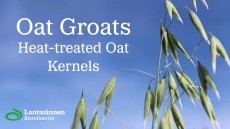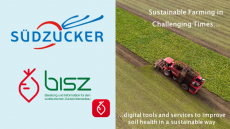Cereal growth slows as challenges continue, says Mintel
manufacturers in this sector continue to face challenges such as
low brand loyalty, market saturation and increasing competition
from other channels, says Mintel.
In its Breakfast Cereal - US report published in August, the market researcher reveals that the breakfast cereal market grew only seven percent between 2002 and 2007 to reach its current value of $10.5bn. However, in constant 2007 prices, this marks a decline of six percent during the review period. This points to the difficult position cereal manufacturers have in growing a 'commodity-based' industry whose hallmark is almost total household penetration, said Mintel "The market has little room to manoeuvre, except in cannibalizing itself, as new products are not filling a void, but replacing established brands that have fallen from favor." The biggest challenge facing the industry today is increased competition from the foodservice sector. Research conducted for the report reveals that 34 percent of consumers get breakfast from a fast food restaurant at least once a week. A parallel slowdown in sales of yogurt drinks and cereal bars also suggests that consumers are looking for other breakfast alternatives, perhaps outside the home. Another threat to the category is on-the-go breakfast items, which are gaining in popularity as American lifestyles become all the more hectic. Some 21 percent of respondents to Mintel's survey said they opt for breakfast foods they can eat on the go, with a similar amount saying they occasionally take cereal with them in a bag or container to eat on the go. Other challenges include the price of cereal products, with 72 percent of respondents agreeing that price is important when choosing breakfast cereals. Only one third of consumers agreed that cereal is reasonably priced. "To compound matters, brand loyalty is low: some 32 percent of respondents who eat cold breakfast cereal eat Cheerios, while 25 percent eat Honey Nut Cheerios, making these two General Mills brands the top adult cereal favorites. With so many cold cereals from which to choose, it is difficult to sustain brand loyalty," said the report. Nutrition is another battleground for cereals, especially the nutritional value of cereal aimed at children, as manufacturers have responded to rising health concerns with a flow of reformulated products since 2004. Some of these products have met with mixed success, said Mintel, while others were "outright failures". Nevertheless, consumers still seek out healthier products with a taste that matches their expectations - 94 percent of respondents said they consider taste to be important. Price was the second most important attribute, cited by 72 percent of consumers, while third in the list came the presence of whole grains, which is important to 66 percent of shoppers. When buying cereal for children, 84 percent of respondents consider nutrition to be important, while 72 percent consider price to be important. Sugar content (66 percent) and what the child asks for (62 percent) round out the top four important attributes, said Mintel. Beyond meeting consumers' price, taste and nutrition expectations, manufacturers can track opportunities in the emerging snacking sector, as more than four in ten consumers said they eat cereal as a snack. In addition, organic and natural products have been gaining in popularity, as have those for allergic consumers (lactose- and gluten-free). Kosher, and to a lesser extent Halal, have also become more common, while positive health claims continue to grab consumer attention. These may include 'high-in' claims (e.g. high in calcium), 'low-in' claims (low in sugar, salt), and functional claims (Omega-3, pre-biotic). "The cereal market thrives on innovation and new launches hit many of the 'touch points' that have been making news: whole grain products, the 'heart-healthy' claim accorded many oat-based products, and an interest in functional foods including 'pro-biotic' foods such as yogurt, which have been turning up in breakfast cereals, primarily in those aimed at adults," said the report. Market leaders are currently Kellogg, which holds 30 percent of the US market, followed by General Mills with 25 percent (after it saw its sales drop eight percent since 2005). The Quaker Oats Company and Kraft Foods each hold a 13 percent share of the market, while private label accounts for 11 percent of sales. Total US sales of hot and cold breakfast cereal are forecast to increase at an inflation-adjusted annual rate of one percent through 2012.




















